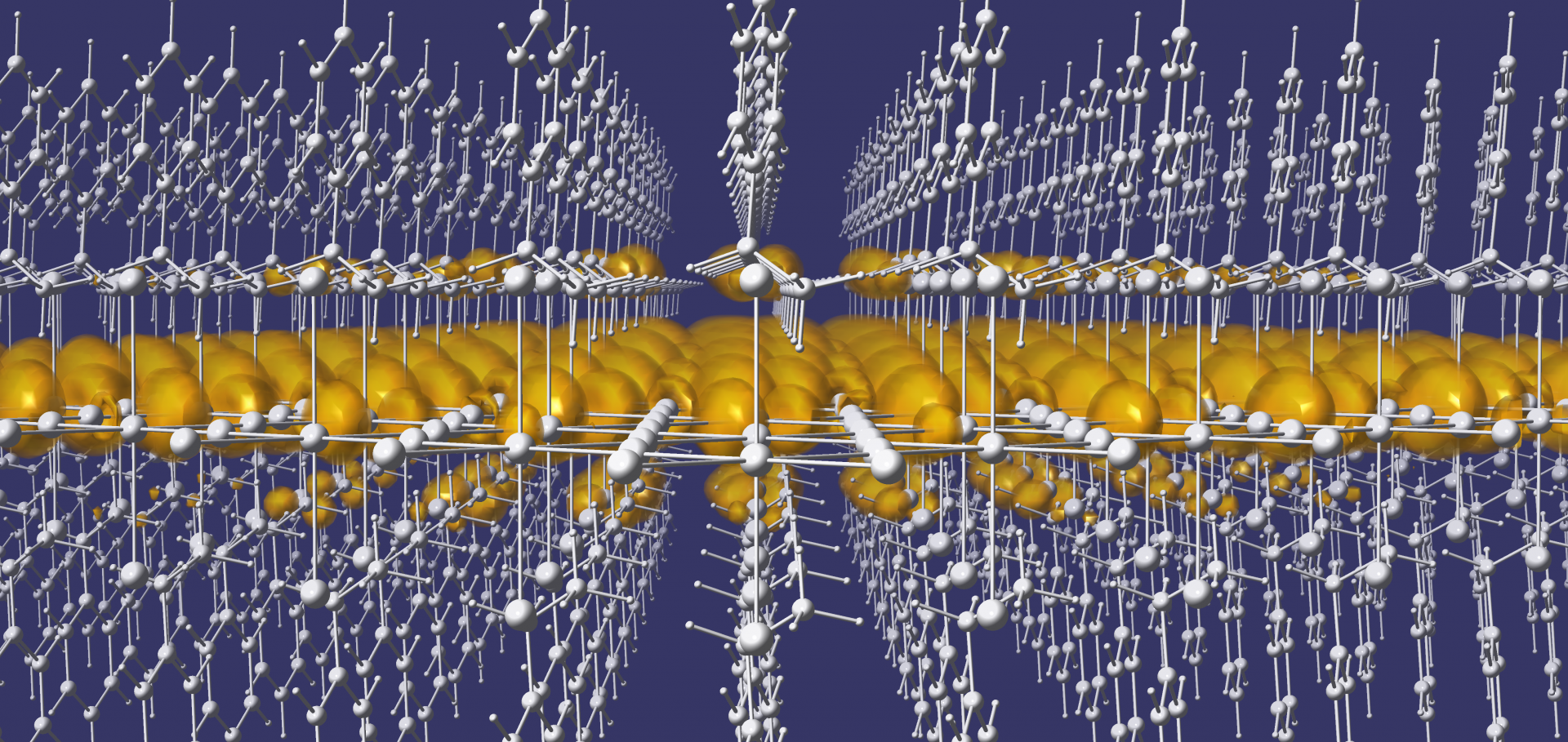Understanding the degradation of methylenediammonium and its role in phase-stabilizing formamidinium lead triiodide
Abstract:
Formamidinium lead triiodide (FAPbI3) is the leading candidate for single-junction metal–halide perovskite photovoltaics, despite the metastability of this phase. To enhance its ambient-phase stability and produce world-record photovoltaic efficiencies, methylenediammonium dichloride (MDACl2) has been used as an additive in FAPbI3. MDA2+ has been reported as incorporated into the perovskite lattice alongside Cl–. However, the precise function and role of MDA2+ remain uncertain. Here, we grow FAPbI3 single crystals from a solution containing MDACl2 (FAPbI3-M). We demonstrate that FAPbI3-M crystals are stable against transformation to the photoinactive δ-phase for more than one year under ambient conditions. Critically, we reveal that MDA2+ is not the direct cause of the enhanced material stability. Instead, MDA2+ degrades rapidly to produce ammonium and methaniminium, which subsequently oligomerizes to yield hexamethylenetetramine (HMTA). FAPbI3 crystals grown from a solution containing HMTA (FAPbI3-H) replicate the enhanced α-phase stability of FAPbI3-M. However, we further determine that HMTA is unstable in the perovskite precursor solution, where reaction with FA+ is possible, leading instead to the formation of tetrahydrotriazinium (THTZ-H+). By a combination of liquid- and solid-state NMR techniques, we show that THTZ-H+ is selectively incorporated into the bulk of both FAPbI3-M and FAPbI3-H at ∼0.5 mol % and infer that this addition is responsible for the improved α-phase stability.
Minimal molecular building blocks for screening in quasi-two-dimensional organic–inorganic lead halide perovskites
Abstract:
Layered hybrid organic–inorganic lead halide perovskites have intriguing optoelectronic properties, but some of the most interesting perovskite systems, such as defective, disordered, or mixed perovskites, require multiple unit cells to describe and are not accessible within state-of-the-art ab initio theoretical approaches for computing excited states. The principal bottleneck is the calculation of the dielectric matrix, which scales formally as O(N4). We develop here a fully ab initio approximation for the dielectric matrix, known as IPSA-2C, in which we separate the polarizability of the organic/inorganic layers into minimal building blocks, thus circumventing the undesirable power-law scaling. The IPSA-2C method reproduces the quasi-particle band structures and absorption spectra for a series of Ruddlesden–Popper perovskites to high accuracy, by including critical nonlocal effects neglected in simpler models, and sheds light on the complicated interplay of screening between the organic and inorganic sublattices.
Zwitterions in 3D perovskites: organosulfide-halide perovskites
Abstract:
Although sulfide perovskites usually require high-temperature syntheses, we demonstrate that organosulfides can be used in the milder syntheses of halide perovskites. The zwitterionic organosulfide, cysteamine (CYS; +NH3(CH2)2S–), serves as both the X– site and A+ site in the ABX3 halide perovskites, yielding the first examples of 3D organosulfide-halide perovskites: (CYS)PbX2 (X– = Cl– or Br–). Notably, the band structures of (CYS)PbX2 capture the direct bandgaps and dispersive bands of APbX3 perovskites. The sulfur orbitals compose the top of the valence band in (CYS)PbX2, affording unusually small direct bandgaps of 2.31 and 2.16 eV for X– = Cl– and Br–, respectively, falling in the ideal range for the top absorber in a perovskite-based tandem solar cell. Measurements of the carrier dynamics in (CYS)PbCl2 suggest carrier trapping due to defects or lattice distortions. The highly desirable bandgaps, band dispersion, and improved stability of the organosulfide perovskites demonstrated here motivate the continued expansion and exploration of this new family of materials, particularly with respect to extracting photocurrent. Our strategy of combining the A+ and X– sites with zwitterions may offer more members in this family of mixed-anion 3D hybrid perovskites.


